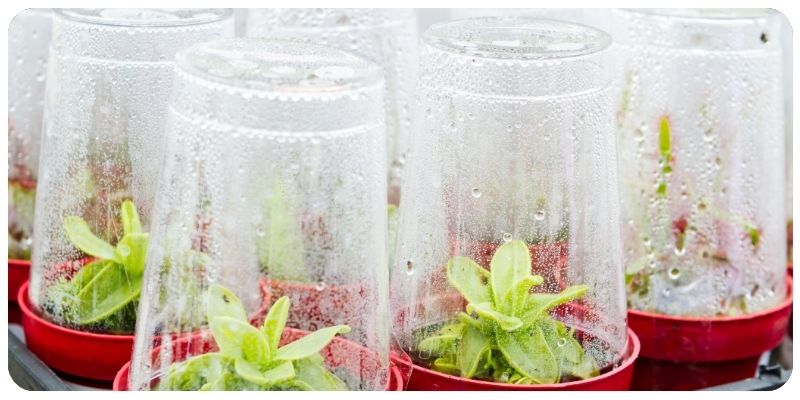
How to Create a Mini Greenhouse for Your Indoor Plants
Building a mini greenhouse for your indoor plants is a great way to provide them with a controlled environment that enhances their growth. Whether you're looking to start seedlings or protect your plants from fluctuating indoor temperatures, a mini greenhouse can be an affordable and practical solution. In this guide, we will walk you through how to create a DIY mini greenhouse for your home.
1. Benefits of a Mini Greenhouse
A mini greenhouse offers several advantages for indoor plants, helping them thrive even in challenging conditions. Some of the key benefits include:
- Climate Control: A mini greenhouse allows you to control the temperature and humidity around your plants, creating an optimal growing environment.
- Protecting Delicate Plants: If you have fragile or tropical plants, a greenhouse can help shield them from drafts, dry air, or fluctuating temperatures indoors.
- Extending Growing Seasons: A mini greenhouse can be used year-round, allowing you to grow plants during colder months or start seedlings before the outdoor growing season begins.
- Boosting Growth: By maintaining a consistent environment, your plants may experience faster growth and healthier development.
2. Materials You’ll Need
Creating a DIY mini greenhouse is simple and requires only a few materials, many of which you may already have at home. Here’s a list of what you’ll need:
- Clear Plastic or Glass Panels: Use plastic sheets, old glass panes, or repurposed clear containers to create the walls of your greenhouse.
- Wooden Frame or Shelving Unit: A basic wooden frame or a small metal shelving unit can act as the structure for your mini greenhouse.
- Hinges or Clips: If you’re building a greenhouse with a hinged door or panel, you’ll need small hinges or clips to open and close the greenhouse.
- Plastic Wrap or Plastic Bags: For a simple, temporary greenhouse, clear plastic wrap can act as a cover to trap heat and humidity.
- Thermometer and Hygrometer: Optional but useful, these tools can help you monitor the temperature and humidity inside your greenhouse.
3. Steps to Build Your Mini Greenhouse
Follow these steps to build your mini greenhouse:
Step 1: Choose a Location
Select a bright spot in your home, ideally near a window that receives plenty of indirect sunlight. Avoid placing the greenhouse in direct sunlight, as it may cause the interior to overheat.
Step 2: Build or Repurpose a Frame
If you’re using a wooden frame or shelving unit, start by assembling or repurposing it to suit your space. The frame will act as the base of your mini greenhouse. Ensure the frame is sturdy enough to support the walls or cover you’ll be adding.
Step 3: Install Clear Panels
Attach clear plastic or glass panels to the sides of your frame. If you’re using plastic wrap or plastic bags, drape them over the frame, ensuring they cover all sides to trap heat and moisture inside. Use clips or tape to secure the plastic in place.
Step 4: Create Ventilation
To prevent overheating or excess humidity, make sure your mini greenhouse has proper ventilation. You can create small openings or adjustable vents using clips, zippers, or flaps in the plastic.
Step 5: Place Your Plants Inside
Arrange your plants inside the mini greenhouse, ensuring they have enough space to grow. Keep taller plants or those that need more light closer to the top, and smaller plants or seedlings near the bottom.
4. Maintaining Your Mini Greenhouse
Once your mini greenhouse is set up, it’s essential to maintain the right conditions to help your plants thrive. Here are some tips:
- Monitor Temperature: Keep an eye on the temperature inside the greenhouse. It should stay between 65°F and 75°F for most indoor plants.
- Humidity Levels: Aim for a humidity level between 50% and 70%. If your greenhouse is too humid, open the vents or cover slightly to reduce moisture.
- Watering: Be mindful of watering frequency. Plants in a greenhouse may not need as much water since the enclosed environment helps retain moisture. Check the soil before watering.
- Fertilizing: Fertilize your plants according to their needs. Some plants may benefit from regular feeding, while others may only need occasional fertilizer.
Conclusion
Building a mini greenhouse for your indoor plants is a rewarding project that can help you grow healthier, more resilient plants. Whether you’re starting seedlings, growing tropical plants, or simply trying to provide the best environment for your greenery, a mini greenhouse offers an effective solution. With just a few materials and a bit of effort, you can create a thriving indoor plant haven.